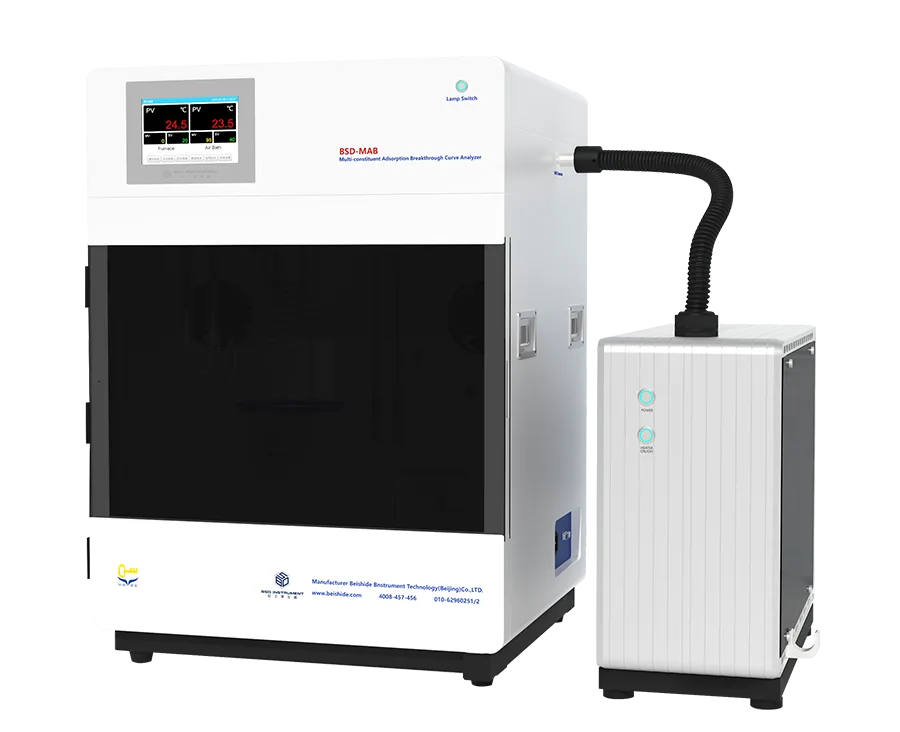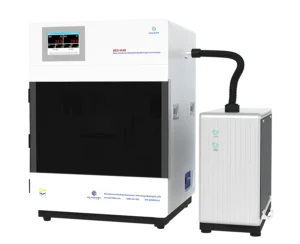Home / Blog / Characteristics of the Breakthrough Curve in China: An Overview of the BSD-MAB Multi-Component Breakthrough Analyzer
Characteristics of the Breakthrough Curve in China: An Overview of the BSD-MAB Multi-Component Breakthrough Analyzer
15 9 月, 2025From: BSD Instrument

The is a critical tool in the study of adsorption processes, particularly in the context of gas separation and purification. In China, the development and application of advanced breakthrough curve analyzers, such as the BSD-MAB Multi-Component Breakthrough Analyzer, have significantly enhanced the understanding and optimization of adsorption dynamics. This article explores the key characteristics and functionalities of the breakthrough curve in China, focusing on the innovative features of the BSD-MAB analyzer.

Advanced Analytical Capabilities
The BSD-MAB analyzer is designed to analyze adsorption breakthrough curves for multi-component gases under a wide range of experimental conditions. This includes variations in adsorbents, temperatures, pressures, bed thicknesses, gas concentrations, and flow rates. The analyzer is equipped with a built-in thermal conductivity detector or an externally connected mass spectrometer, providing highly accurate, real-time data on adsorption dynamics and breakthrough behaviors. This capability is crucial for both research and industrial applications, offering critical insights into adsorption capacity, purification efficiency, and filter lifespan.
Versatile Applications
In China, the BSD-MAB analyzer is widely used in various fields, including gas separation and purification research, such as carbon capture analysis. It supports multi-component competitive adsorption, selective adsorption, and displacement adsorption tests. The analyzer can handle bi-component gas/vapor adsorption breakthrough analysis with a thermal conductivity detector and supports all kinds of conditions, including different adsorbents, test temperatures, pressures, and gas concentrations. This versatility makes it an essential tool for analyzing pollutant gases at ppm-level concentrations and for studying micro-pollutants in environments like rooms, vehicles, and indoors.
Key Features and Technical Specifications
The BSD-MAB analyzer boasts several key features that enhance its performance and applicability. It includes 4-8 gas inlets and 2-3 vapor inlets, with vapor generation capabilities ranging from P/P₀ 0.1%-100% at ±1% accuracy. The analyzer supports various pressure options, including PSA options from 0-1Mpa to 10Mpa, and offers various column options, from 1ml to kilogram level. The activation methods include purging or vacuum, and the outlet quantification provides data on concentration, flow rate, and adsorption amount.
The analyzer's technical specifications are designed to ensure high precision and reliability. It features a low flow detection capability with a mass spectrometer that can detect down to 0.2 SCCM. The compatibility with TCD, mass spectrometer, and infrared ensures a broad range of analytical possibilities. The thermostatic pipeline system maintains a stable temperature up to 50°C ±0.1°C, preventing steam condensation and ensuring consistent test conditions.
Innovations in Gas Separation and Membrane Permeability
The BSD-MAB analyzer also includes innovations in gas separation membrane permeability and separation tooling. It features a dual gas path design, allowing for precise measurement of membrane permeability and separation efficiency through steady-state and non-steady-state methods. The outlet reference gas calibration and quantify system ensures precise quantitative measurement of outlet gas concentration and flow rate, even for low-concentration gases, with ultra-fast response speeds.
Conclusion
The breakthrough curve in China, as exemplified by the BSD-MAB Multi-Component Breakthrough Analyzer, represents a significant advancement in the field of adsorption analysis. Its advanced analytical capabilities, versatile applications, and innovative features make it a valuable tool for researchers and industries focused on gas separation, purification, and environmental monitoring. The analyzer's ability to provide real-time, accurate data on adsorption dynamics under various conditions underscores its importance in optimizing adsorbent performance and designing efficient gas purification systems. As China continues to advance in these areas, the breakthrough curve will remain a pivotal element in driving innovation and sustainability in gas separation technologies.

Our Latest Blog & Articles
Stay updated with our latest news. Discover new product launches, innovative technologies, and upcoming events. Join our community and stay informed about all things lab equipment.
-
27 10 月, 2025
Cheap and Efficient Adsorption-Desorption Systems for Water Pollution Control in China
-
25 10 月, 2025
Gas Adsorption Analyzer Technologies: Advancements and Future Trends
-
23 10 月, 2025
Micropore and Mesopore Analysis for Improving Gas Storage and Separation Efficiency
-
20 10 月, 2025
Membrane Porosity and Its Impact on Mass Transport and Permeation Efficiency




